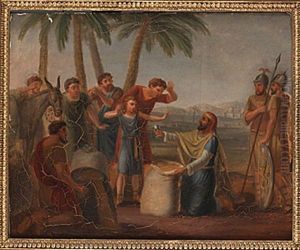Elis Chiewitz Paintings
Elis Chiewitz was a Finnish-Swedish architect whose work is associated with the introduction of the round-arch style, also known as Rundbogenstil, in Finland. He was born on January 27, 1820, in Stockholm, Sweden, and was active during a period that saw significant transformation in architectural styles, with a shift from neoclassicism towards new national romantic and historicist styles.
Chiewitz studied architecture at the Royal Institute of Technology in Stockholm and later at the Royal Swedish Academy of Arts. After completing his studies, he worked in Sweden for some time before moving to Finland, which was then a Grand Duchy under Russian rule. His move to Finland marked the beginning of a significant phase in his career where he contributed to the architectural landscape of the country with a number of notable public buildings, bridges, and churches.
Chiewitz's architectural style was characterized by a mix of neoclassical elements and influences from medieval and renaissance architecture, which was quite innovative for that time in Finland. His work in Finland includes designs for the city plan of Vaasa after a devastating fire in 1852, the Mikkeli Cathedral, and the Old Church of Lappee. He is also known for his design of the Verla groundwood and board mill, which is now a UNESCO World Heritage Site.
Despite his contributions to architecture, Chiewitz's career was relatively short-lived. He faced financial difficulties and was declared bankrupt in 1860. This misfortune affected his career, and he was forced to return to Sweden, where he died just two years later on September 18, 1862. Even though his life and career were cut short, Elis Chiewitz left an indelible mark on Finnish architecture and is remembered as an important figure in the development of the country's architectural identity during the 19th century.

